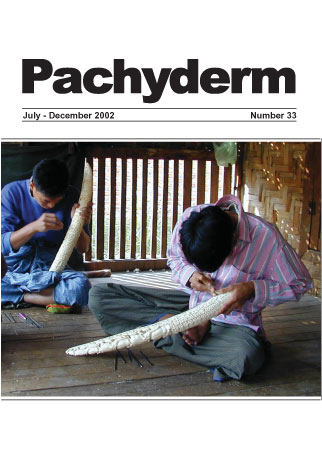Movement of elephants in the Selous-Niassa wildlife corridor, southern Tanzania
Abstract
Reviews elephant distribution and migatory movements through the Selous-Naissa wildlife corridor (SNWC - which at present has no official designation or protection) as obtained from data collected from village public meetings, questionnaire surveys and field observations in the 21 village located within the corridor. The corridor harbours several well-established migratory routes and numerous areas that are important as seasonal or year-round habitat for elephants and other wildlife. Elephants are abundant, they are present throughout the year with peak numbers occurring in April and May. Key factors responsible for the movemnts and migrations are thought to be 'availability to water, food and in some places increased disturbances from humans'. The major elephant routes probably depend on large permanent river systems, movements are reported to proceed from south to north between March and April, and from north to south between June and December. Three major migratory routes from Ruvuma to the centre of the corridor and four other routes which serve to connect the Ruvuma River and Selous GR have been identified. Migratory routes from the centre of the corridor to Selous GR are Malimbani, Ritungula and Nampungu ya Chakame while the Sasawala-Lukumbule route connects the SNWC with Mwambesi GR to the east. Several routes are plotted as Tree diagrams, one table includes a list of preferred food plants while another outlines major river systems in the SNWC area.
Downloads
Published
How to Cite
Issue
Section
License
Copyright (c) 2002 Donald G. Mpanduji, H. Hofer, Thomas B. Hildebrandt, Frank Göritz, Marion L. East

This work is licensed under a Creative Commons Attribution-NonCommercial 4.0 International License.




